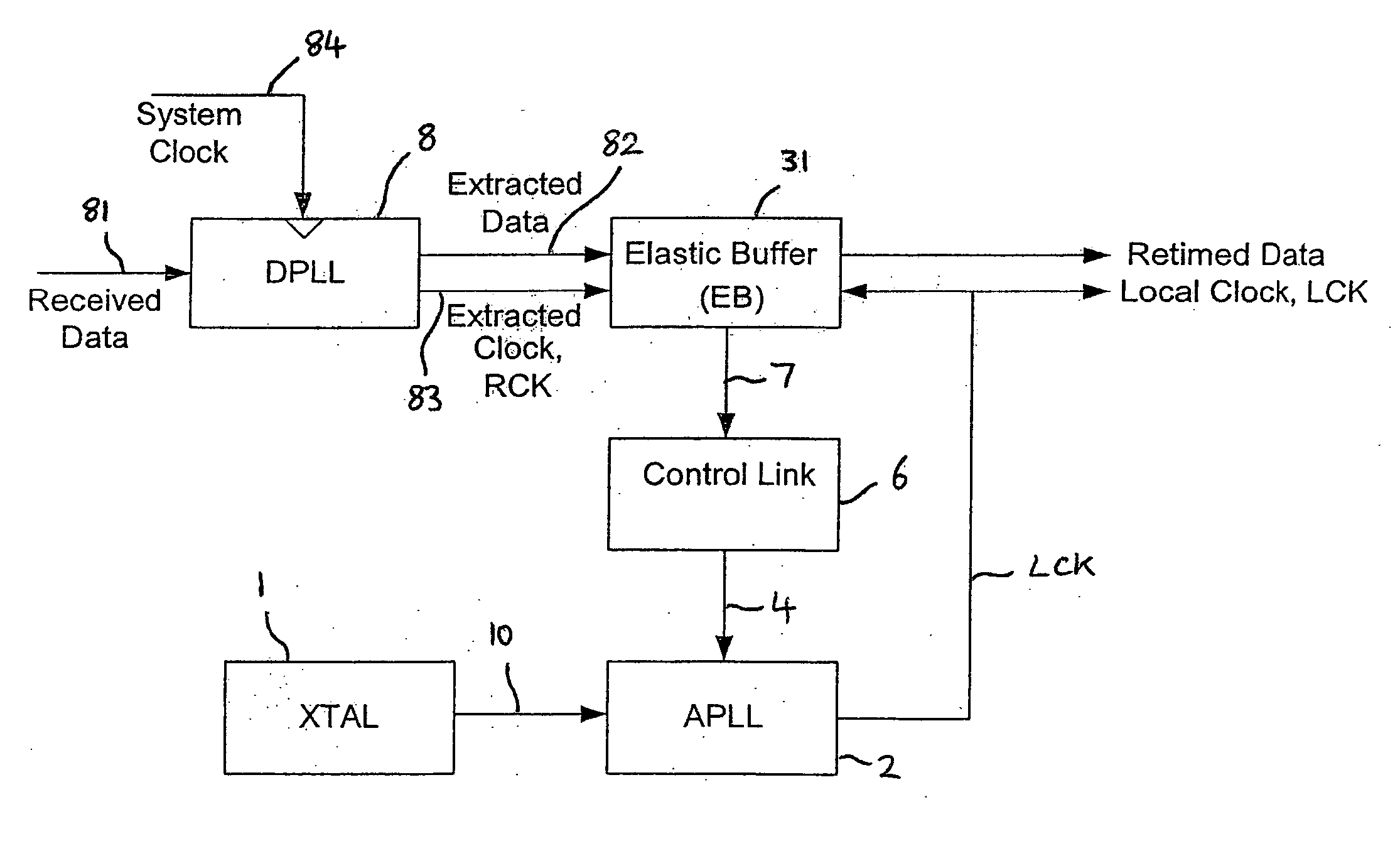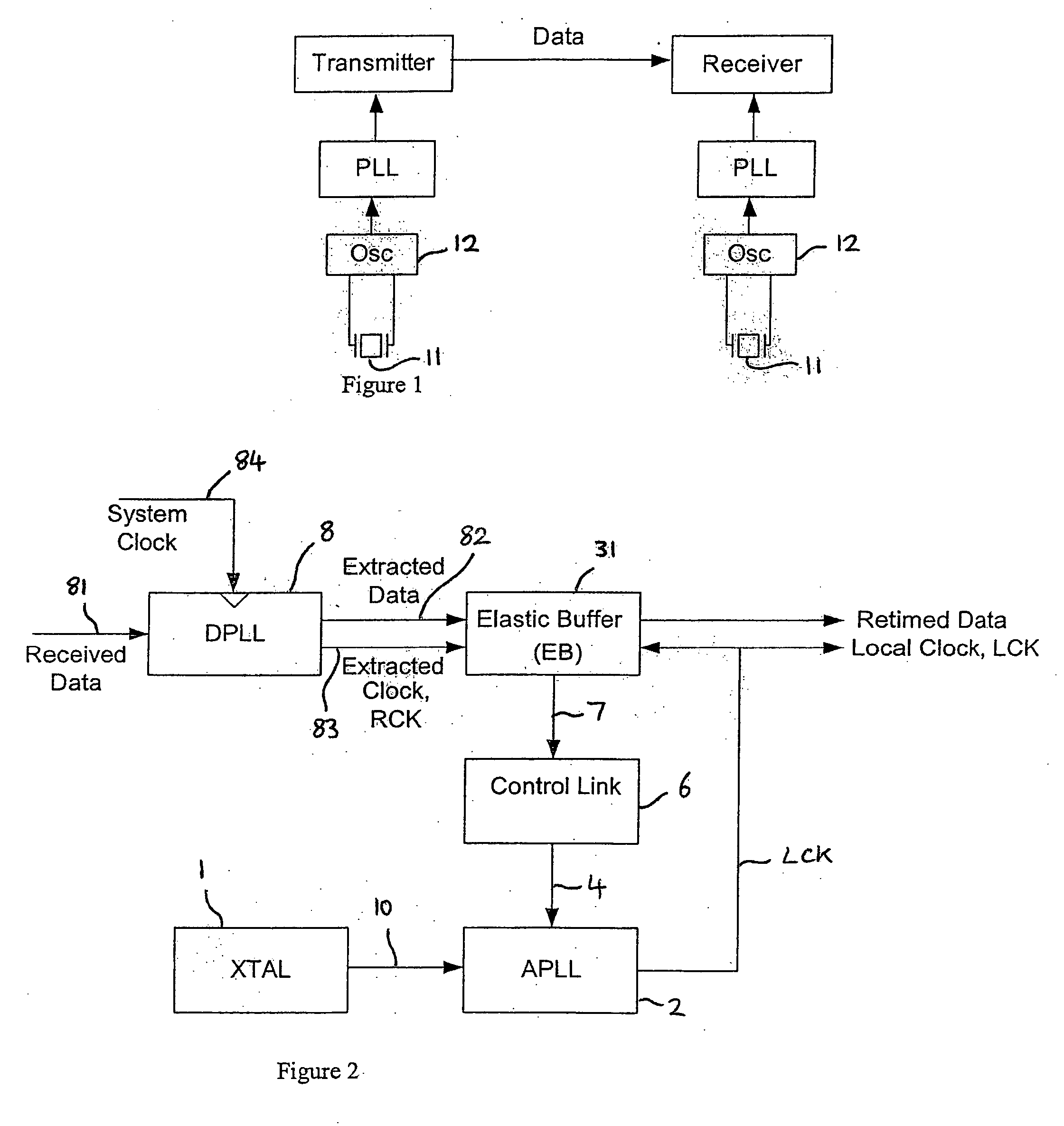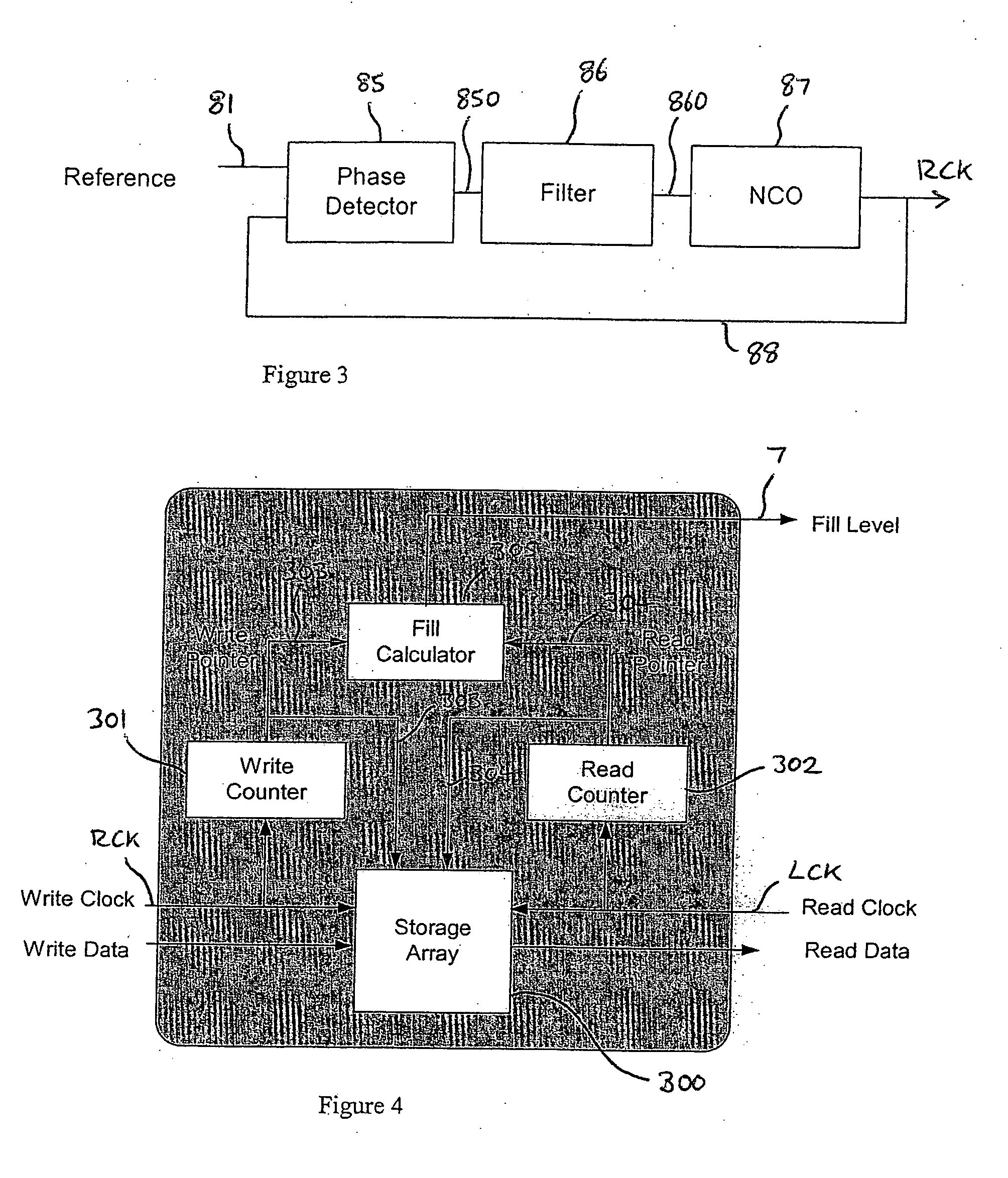Clock synchroniser and clock and data recovery apparatus and method
a clock synchroniser and data recovery technology, applied in multiplex communication, baseband system details, instruments, etc., can solve the problems of inability to recover small amounts of jitter, inability to accept data error rates in received data, and inability to add additional jitter in the data stream, so as to avoid data loss, reduce jitter, and reduce jitter
- Summary
- Abstract
- Description
- Claims
- Application Information
AI Technical Summary
Benefits of technology
Problems solved by technology
Method used
Image
Examples
Embodiment Construction
[0123] Referring now to FIG. 2, a clock and data recovery circuit (system) embodying the invention includes a clock and data extraction circuit 8 that comprises a digital phase locked loop (DPLL). A stream of received data 81 containing embedded clock information is supplied to the DPLL, which is used to lock onto the incoming data and generate an internal intermediate clock RCK 83 (which shall be referred to as the received clock) and a stream of retimed internal data 82 (i.e. extracted data). The generation of the internal intermediate clock may also be described as the extraction of a clock signal from the stream of received data, and hence the internal intermediate clock may also be referred to as an extracted clock.
[0124] The extracted data 82 and the extracted clock 83 are provided to inputs of an elastic buffer (EB) 31. The EB is used to absorb any short or medium term timing variations between the local and remote clock domains. It also generates a pointer error signal (P) ...
PUM
 Login to View More
Login to View More Abstract
Description
Claims
Application Information
 Login to View More
Login to View More - R&D
- Intellectual Property
- Life Sciences
- Materials
- Tech Scout
- Unparalleled Data Quality
- Higher Quality Content
- 60% Fewer Hallucinations
Browse by: Latest US Patents, China's latest patents, Technical Efficacy Thesaurus, Application Domain, Technology Topic, Popular Technical Reports.
© 2025 PatSnap. All rights reserved.Legal|Privacy policy|Modern Slavery Act Transparency Statement|Sitemap|About US| Contact US: help@patsnap.com



